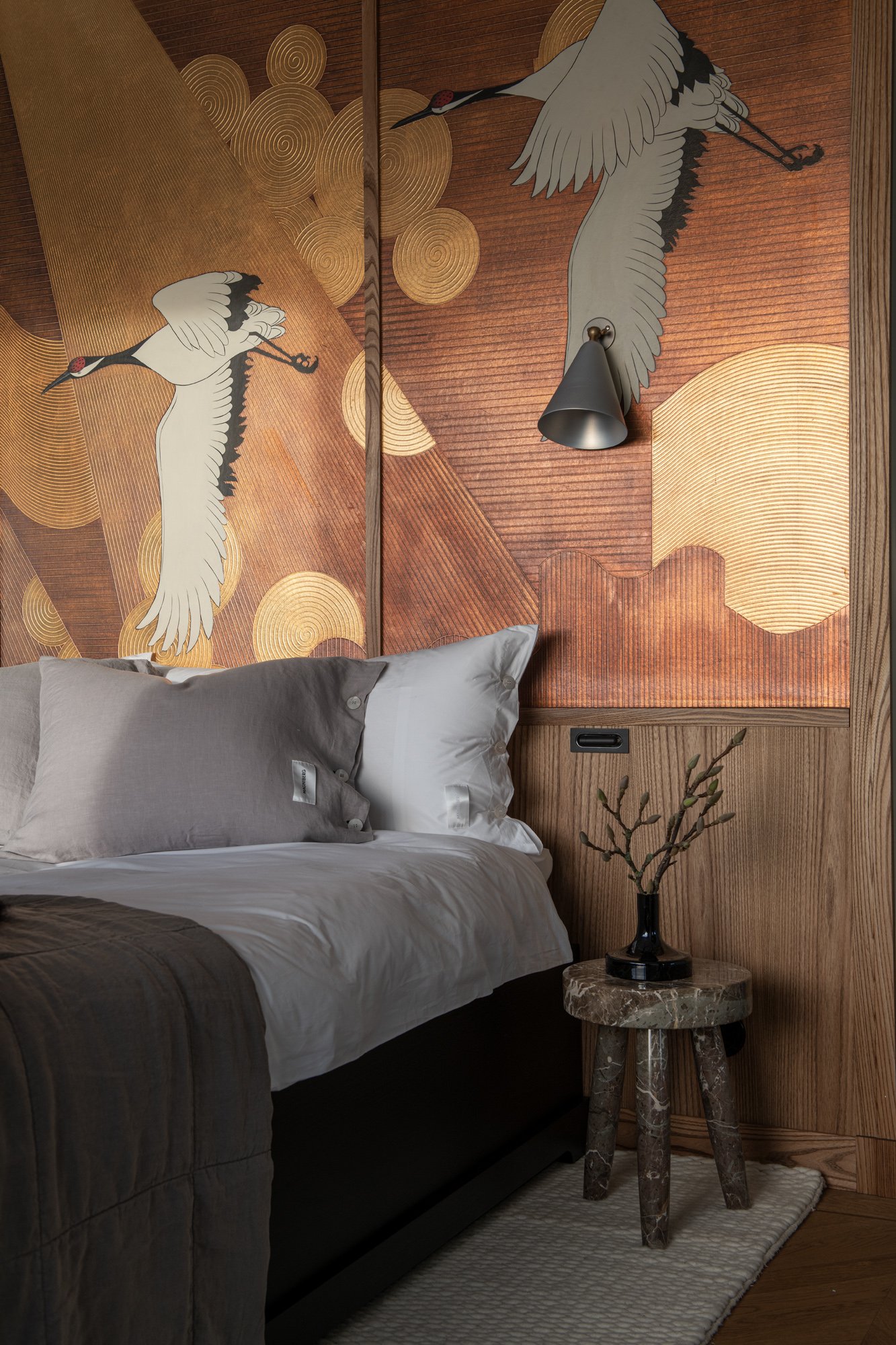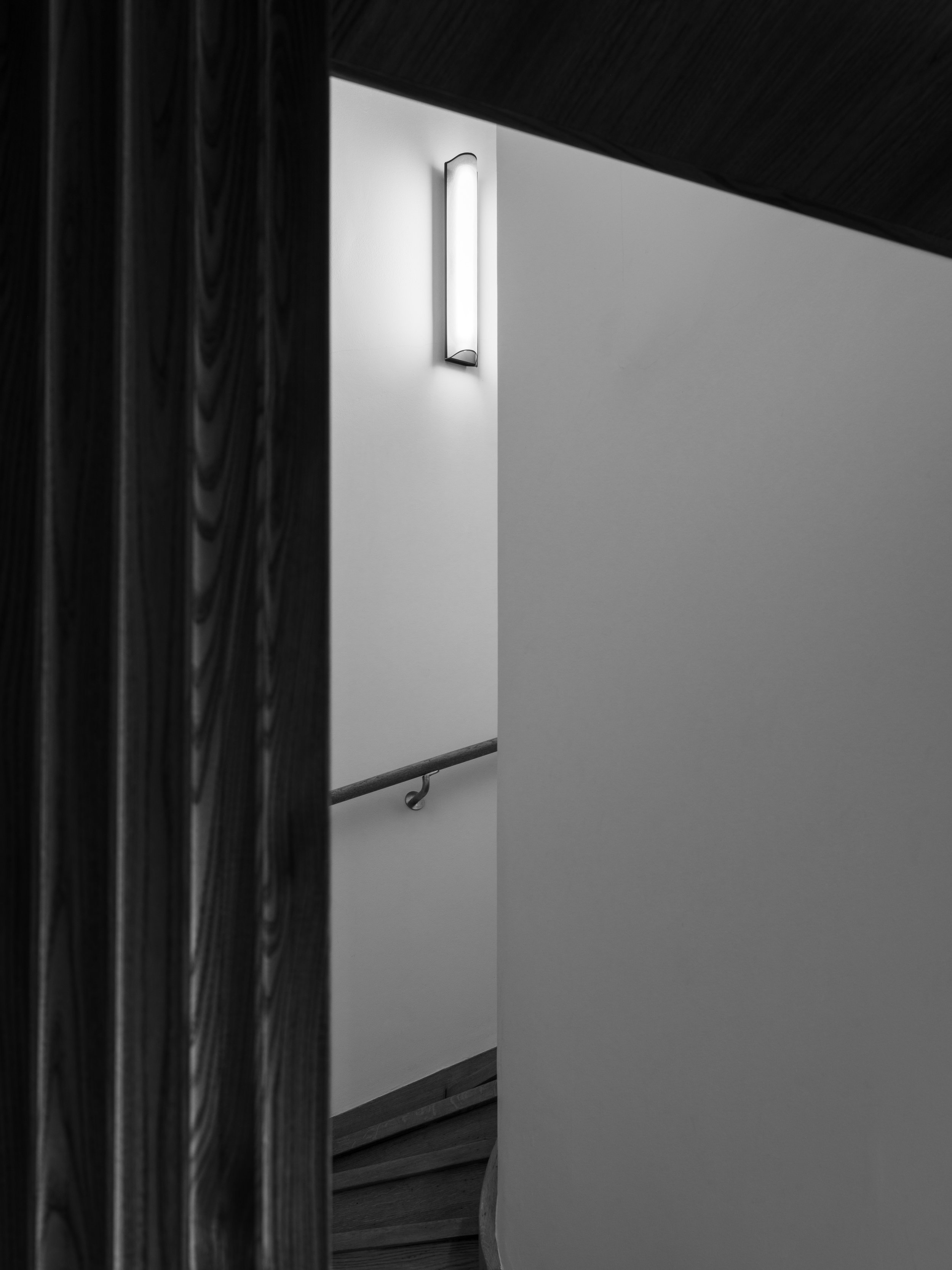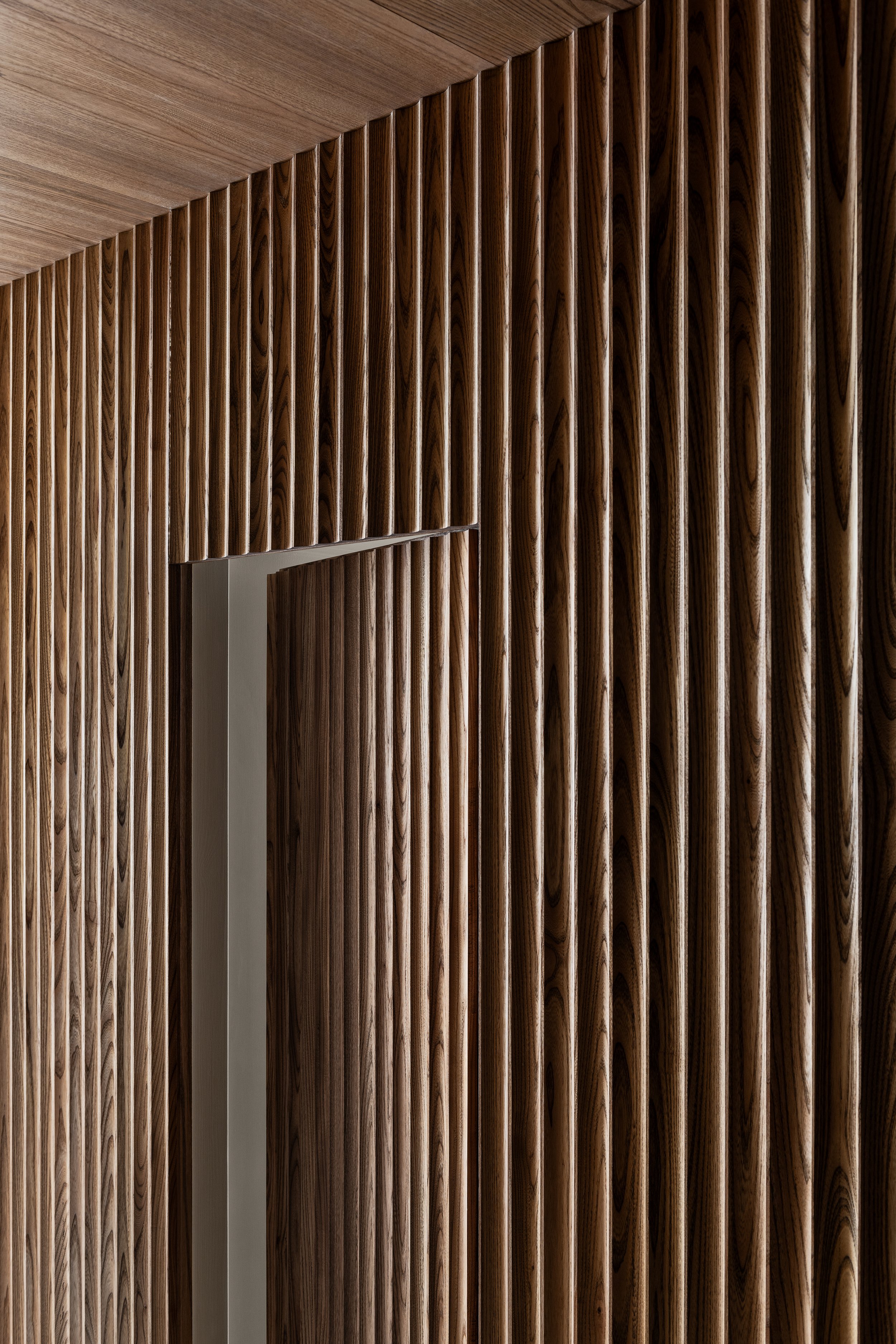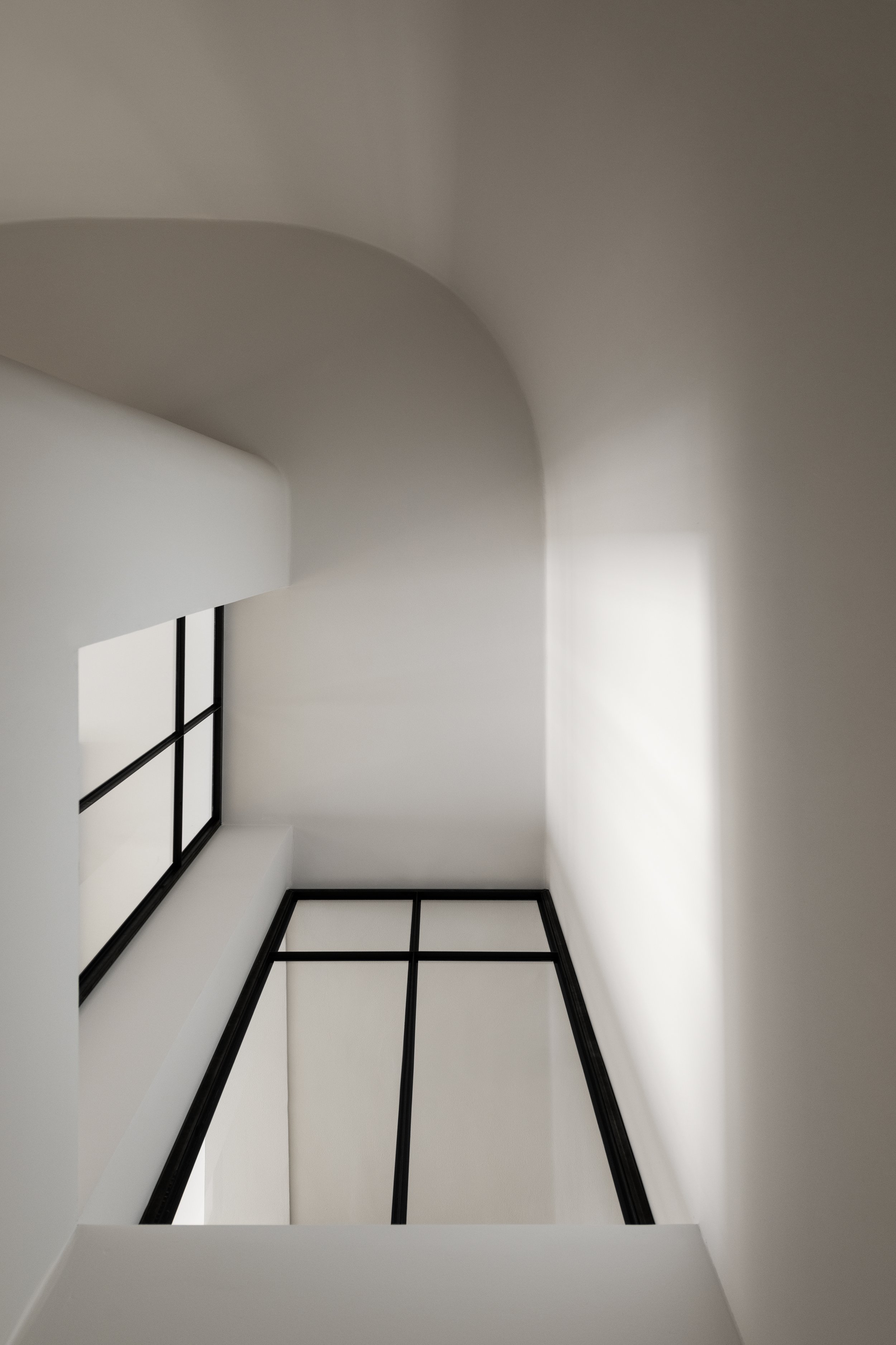Kungsholmstorg
“When I first showed my father round, he said it was too big and in too bad shape,” Andreas Martin-Löf chuckles, recalling an early site visit to his prospective new home in the former headquarters of AB Aerotransport, in the 1936 building overlooking the waters of Riddarfjärden. Specifically, they were looking at the apartment that belonged to Carl Florman, the airline’s charismatic founder, who Martin-Löf describes as finding curiously compelling for his: “Al Capone-like image - fond of hats and double-breasted suits”. The architect reminded his father that he is still young and has a lot of energy and, after 1.5 years of renovation, the apartment is now his home.
From “Taking Flight” article in Wall Street Journal, 2020.
This project features 03 Sinus Single 550 and 03 Sinus Dual 1050 and bespoke version of 01 Cone Wall 160
Martin-Löf’s father is presumably quite used to looking around potential homes with his son. In the past fifteen years, he has lived in five different places, each designed by himself. It’s a nomadic restlessness that sounds tiring, so it’s maybe no surprise to hear Martin-Löf say that he expects to stay put for quite a while longer in his current abode. And it’s not hard to see why. The 480 metre-square duplex space, complete with 6 balconies, is a rare modernist gem in Stockholm that the architect has poured characteristic heart and soul into balancing renovation and redesign, while bringing it to life as an exquisite home.
It’s not hard to trace an autobiographical journey through Martin-Löf’s former homes. In each, there is a feeling that he lives both in and through his own work – from the young, successful ingenue of The Hat Factor to the sensory escapism of the Aspvik summer house to the high-ceilings and refinement of the Lyceum. The archival research, the hands on craftsman-like process, the careful material choices, the forensic detail and the jigsaw of the physical, the mental and the emotional capacity of home – each project develops the architect, teaching and providing for him in equal measure. “Architecture is a play of two acts: it’s about creating something new and killing something old at the same time,” he says wistfully.
If work and life are metaphorically intertwined for Martin-Löf, in his latest home they are literally too. His architecture practice is based on the upper floor of the duplex, a proximity he finds convenient rather than suffocating or stressful. “Friends and family have warned me of the dangers of having no work-life balance,” he says, “but I think it’s no different historically from the baker or carpenter living above their place of work.” He points to a string of creative folk who have lived in or above or under their workplaces, and successfully embodied their life principles in their practice as a result: Andy Warhol, Donald Judd, Ilse Crawford. “I take the internal staircase between my apartment and the studio at the weekend, and use the public staircase on weekdays, so there are some thresholds,” he says.
There’s a sense that Martin-Löf is settling domestically and professionally. “After a decade of very intense and quite varied work, I’m entering a period where I feel more in control,” he says. “I’m working with quite a few private residential clients who are coming to me for architecture, rather than solving large floorplans or only working with standard solutions. Working at a more bespoke level allows for greater learning and creativity, and ultimately more interesting results.” He is a model of discretion when talking about private clients, but a brief internet search offers up Daniel Ek, founder of Spotify, and younger members of the Swedish Royal family.
The notion of bespoke solutions is something Martin-Löf has tested heavily in his current abode. He has divided Florman’s giant former reception room into half master-bedroom, half-master bathroom, with an astonishing stone bathtub that appears to either grow out of or melt into the floor. “The stone is the same as the stone on the façade of the building, as well as the façade of NK Department store,” he explains. “It comes from a Swedish family owned quarry. They had just purchased their first CNC-machine and I wanted to see if we could achieve this complicated idea together. It took six months, but it means a lot to me that it was made in Sweden.” The spectacular tub has already achieved cult status, after being graced by football hero Zlatan Ibrahimovic in a fragrance advert.
Martin-Löf has never been precious about keeping his homes private. He acknowledges the act of showing and sharing them, in reality and in media, social or otherwise, as a powerful tool for bringing interesting opportunities to his door. A picture of his extremely photogenic plywood and marble summer house was one of Instagram’s most-shared images in 2018. “I have an inner life that is disconnected from the images, so I’ve never minded being public about my private spaces,” he explains. “That said, I don’t like the idea of my homes being show homes quite so much. They are personal. When I entertain, I like people to enjoy being together in each other’s company, and not to spend time talking about the apartment design.”
Moving from his former Lyceum apartment into his current home, Martin-Löf decided to sell much of the contents of his old apartment at Bukowskis, the local Stockholm auction house. For an architect and designer who values history and emotion in buildings, materials and objects, it seems like a surprisingly rash move. “There was a practical reason,” he laughs, “the ceiling heights in my new apartment are typically modern and fairly compressed at 2.9 metres, compared to my previous place where they were unusually high at 4.5 metres. A lot of my furniture just wouldn’t fit or feel right. It was also a cathartic release to start over; a nice way of saying I’m changing things in my life.”
Anyone who has followed Martin-Löf’s career to date might be surprised by a contrast in feeling and mood in his new home, by comparison to his former dwellings where natural and neutral materials and colours mixed to soothing and tasteful effect. Here, there’s a more complex richness and an elegant refinement, a nod to a greater confidence of expression, or the spirit of Florman creeping in perhaps. The stone bathroom, the mirrored ceiling in the hallway and the de Gournay panels of flying cranes behind his bed, are strikingly decadent and playful simultaneously. “As we all know, life is a long learning curve,” Martin-Löf muses, “The older I get, the more fun I let myself have.”








